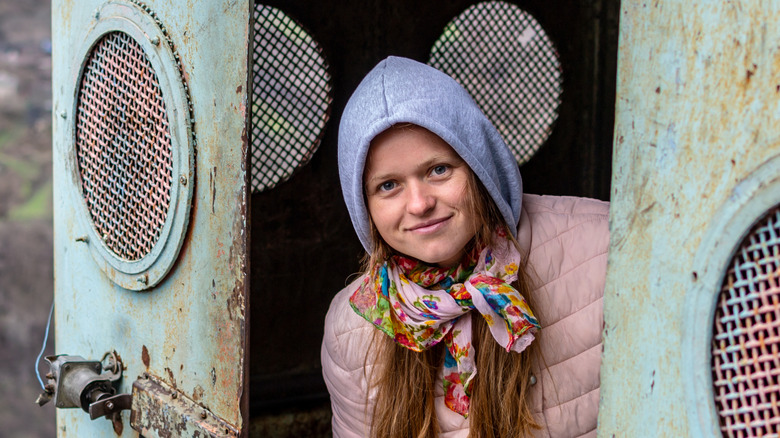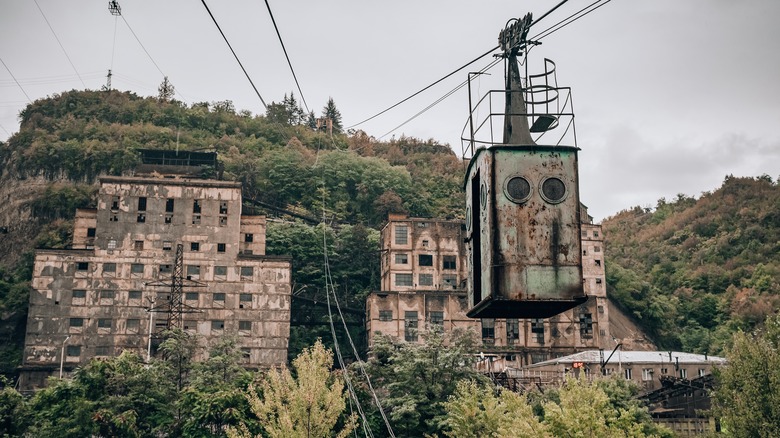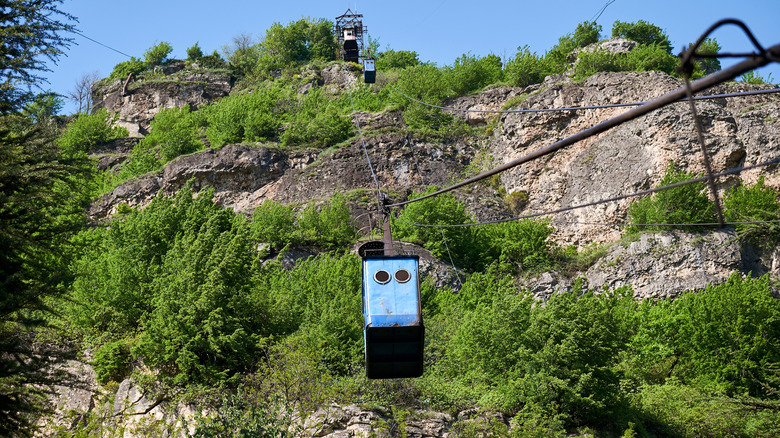The History Of The USSR's Rope Roads In Georgia
Relics of Soviet-era industrial development are still in use in one remote Georgian town, according to The Atlantic. The Soviet-era technology still found in the Georgian town of Chiatura was built in the 1950s, under the rule of Soviet leader Joseph Stalin. Since then, much, but not all, of what Stalin envisioned has rusted away, but some of it is still in use. The town of Chiatura was once a center for one specific type of heavy industry important to the Soviet economy. With that in mind, what the Soviets built, though badly deteriorated, serves a similar purpose to this day.
The town of Chiatura, in central Georgia, is located in an area full of steep cliffs and crisscrossed by gorges, per the Radio Free Europe website. The cliffs and hills surrounding the town of Chiatura are filled with manganese. Mining the trace mineral was a priority for the Soviets for its role in steel production, according to the United States Geological Survey. Pre-revolution, Russia lagged behind the rest of the world in terms of industrial development. But by the 1970s the U.S.S.R. led the world in steel production, thanks in part to the manganese mined from around Chiatura (via The New York Times). Before that manganese could be mined, one logistical issue had to be solved, though.
Stalin built the 'rope road'
Part of the Soviet vision was to develop Chiatura into a cultural and industrial mining center. The harsh terrain, though, made that difficult. In response, the U.S.S.R. began construction of an elaborate system of aerial tramways or cable cars known as the Kanatnaya Doroga, or the "rope road." That system helped residents of Chiatura travel from their homes to work in the mines located in the hills nearby. In the heyday of Chiatura, nearby mines were responsible for 60% of worldwide manganese production, according to The Atlantic.
After the Russian Revolution in 1917 and the subsequent period of military expansion, Russia's neighbor, the country of Georgia, became one of the 15 so-called Soviet Socialist Republics of the United Soviet Socialist Republics (U.S.S.R.), per Britannica. Absorbed into the U.S.S.R. in 1921, the Georgian republic declared independence from Moscow in 1991, two years after the fall of the Berlin Wall. Russian President Vladimir Putin reinvaded Georgia in 2008 and roughly 20% of the country remains occupied by Russian forces as recently as 2019, based on CNBC reporting.
In 2008, 12 passengers were trapped on the 'rope road'
Much of the old Soviet 'rope road' built under Stalin's regime is now gone, but as The Atlantic goes on to write, 17 tramway cars are still in use. But they, too, have started to deteriorate. Mine workers and residents of Chiatura travel the 'rope road' to work in the manganese mines, back in operation after a period of inactivity when the Soviet Union fell. The tramways are operated by hand, and typically carry four or five passengers to their destination from a central station.
One tramway in particular that's still use reaches heights of nearly 500 feet above the valley floor. Others cross the Kvirila River that bisects Chiatura. In 2008, more than half a century after the system was built, one tramway hauling rope broke and 12 passengers dangled precariously for half a day. All were rescued, as Radio Free Europe reports.


